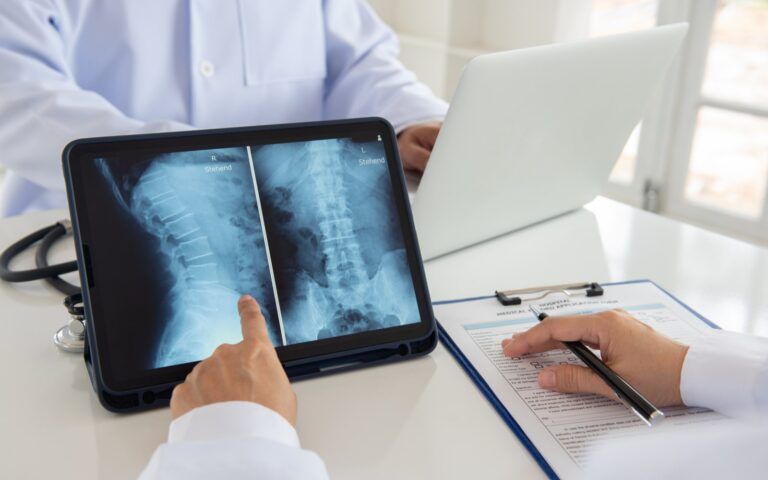An Overview Of The Types and Stages of Herniated Discs

The discs in your spine help support your body’s ability to move, protect from shock, and keep the spine flexible and structured. When these discs are damaged to injury or age, herniated discs can occur. Herniated discs cause pressure on the nerves and spinal cord and develop when the soft inner nucleus of the disc in the spine pushes through the outer wall, coming into contact with the nerve roots, causing pain. Herniated discs can affect any part of the spine but most commonly affect the neck and lower back. For most people with herniated discs, the pain can be relieved without surgery, but surgery can be performed if necessary.
Types and Stages of Herniated Discs
Herniated discs vary according to their symptoms but overall exhibit similar progression over time. These four stages include:
- Stage 1: Disc Protrusion – A disc protrusion is the mildest form of a herniated disc and will typically cause the outer annulus fibrosus layer of the disc to weaken but will not produce a herniation. This stage is considered an incomplete herniation medically but will begin to produce mild pain and numbing sensations.
- Stage 2: Disc Prolapse – The position of the disc will change over time, causing a sharp violation of its outer layer by the inner nucleus pulposus layer but not a complete tear. These are also called bulges and will put pressure along the spinal canal and its pain, tingling, and numbing symptoms.
- Stage 3: Disc Extrusion – At this stage, the inner gel-like layer will break out of the outer layer wall, but its remaining structure will stay within the disc. Considered to be a complete herniation, the pain resulting from this herniated disc can also produce radiculopathy, or pinched nerves, which can affect the body’s motor skills and sensory changes because of the nerve being compressed.
- Stage 4: Sequestered Disc – Once the nucleus pulposus layer breaks through the outer layer, the inner layer will lie outside the disc and affect the spinal canal, causing a herniated nucleus pulposus. At this stage, it is considered to be a complete herniation and a neurological deficit.
Herniated discs can occur in various parts of the spine, and their location determines where the symptoms will occur.
- Cervical – Existing within the cervical spine or neck causes pain and numbing throughout the neck, arms, and shoulders.
- Thoracic – Occurring in the center of the back and can also cause cauda equina syndrome, which requires immediate treatment. It typically exhibits pain throughout the chest.
- Lumbar – Centering around the lumbar region, or lower back, the pain extends to the buttocks, thighs, and legs.
Causes and Treatment for Herniated Discs
Factors such as age, lifestyle choices, poor posture, and traumatic injury can cause a disc to herniate. Our team can diagnose the condition using your medical history, a physical examination, and diagnostic testing with x-rays, CT scan, and MRI scans to learn more about your spinal problems. Often, a herniated disc will diminish after 4 to 6 months. In chronic, severe cases of herniated discs, we can provide treatment with various non-surgical and surgical treatment options.


Recent Comments